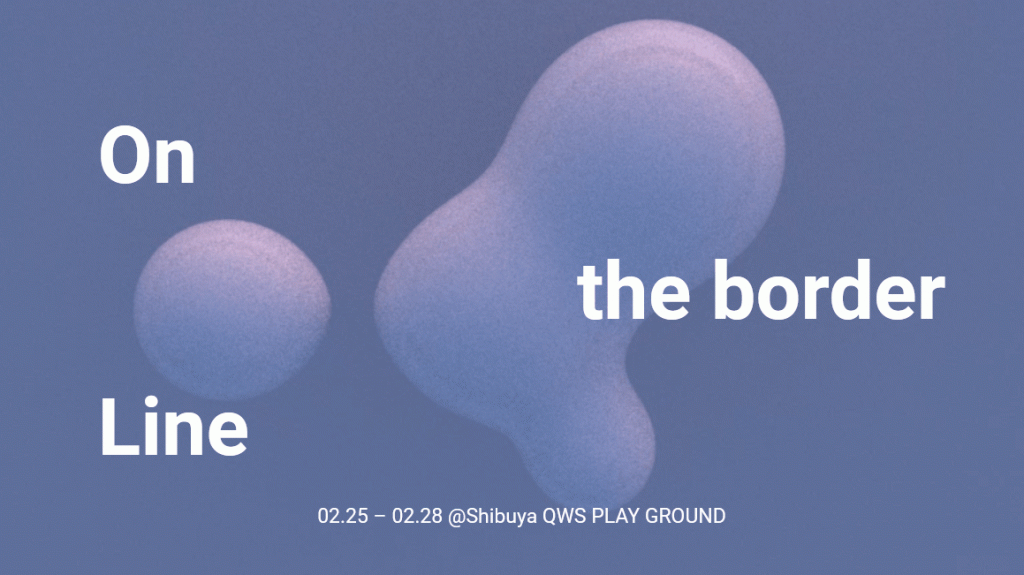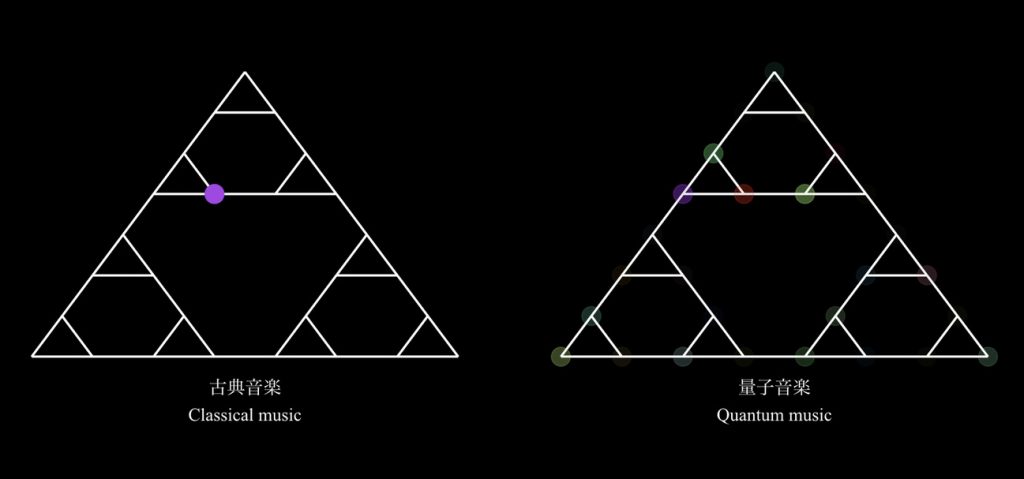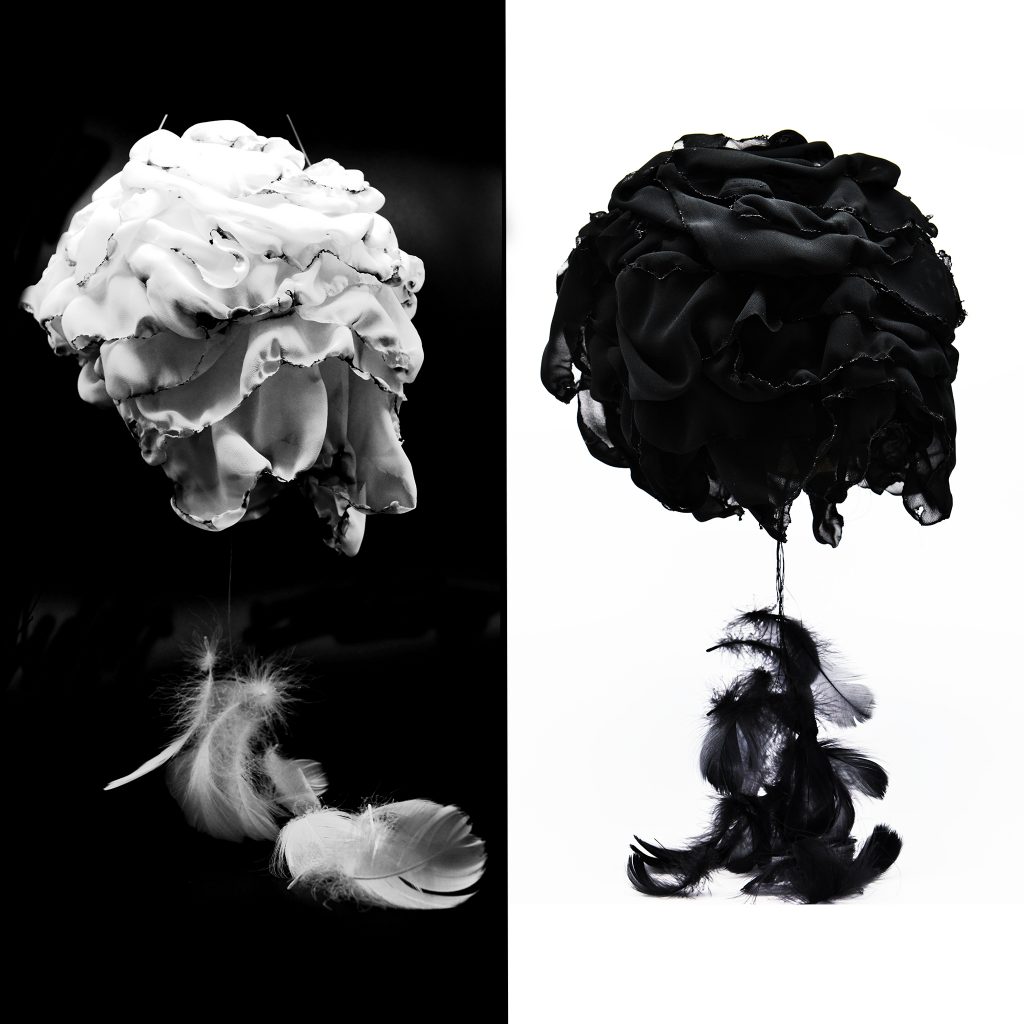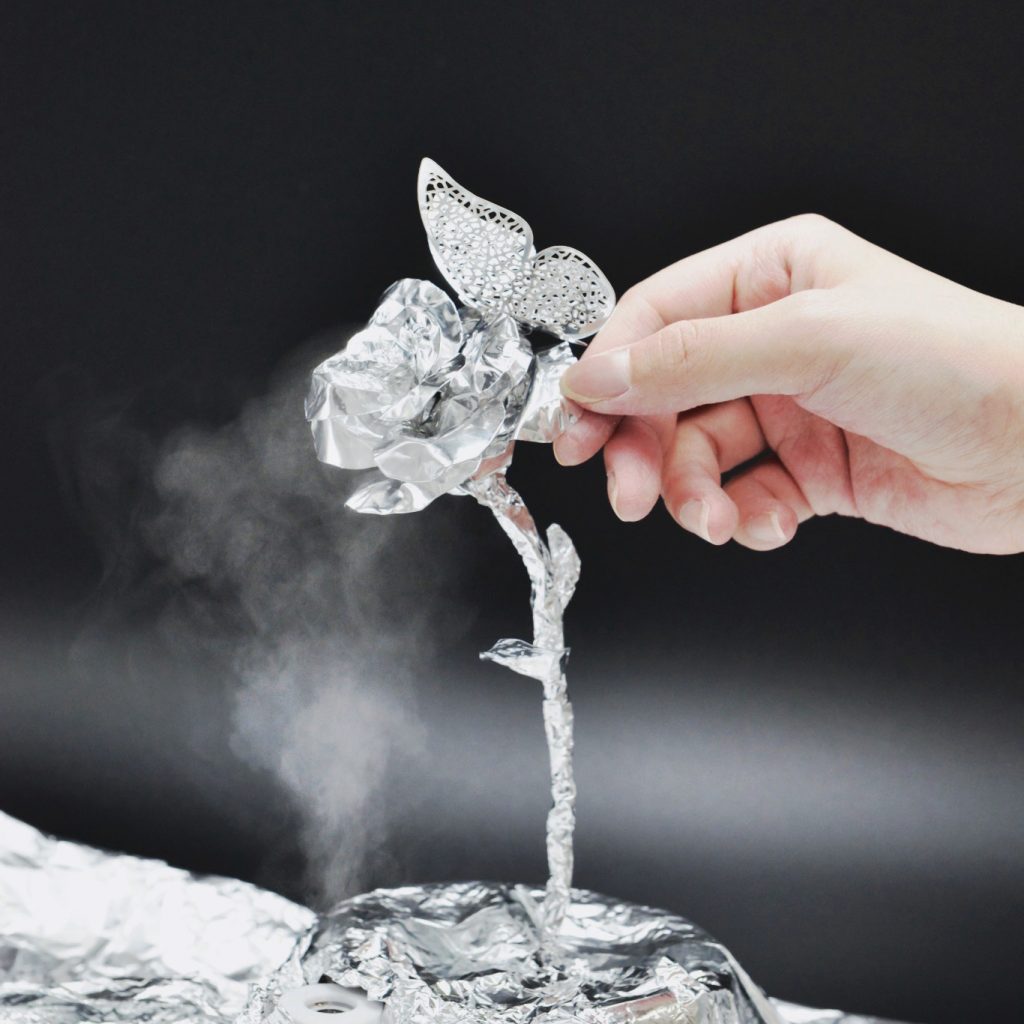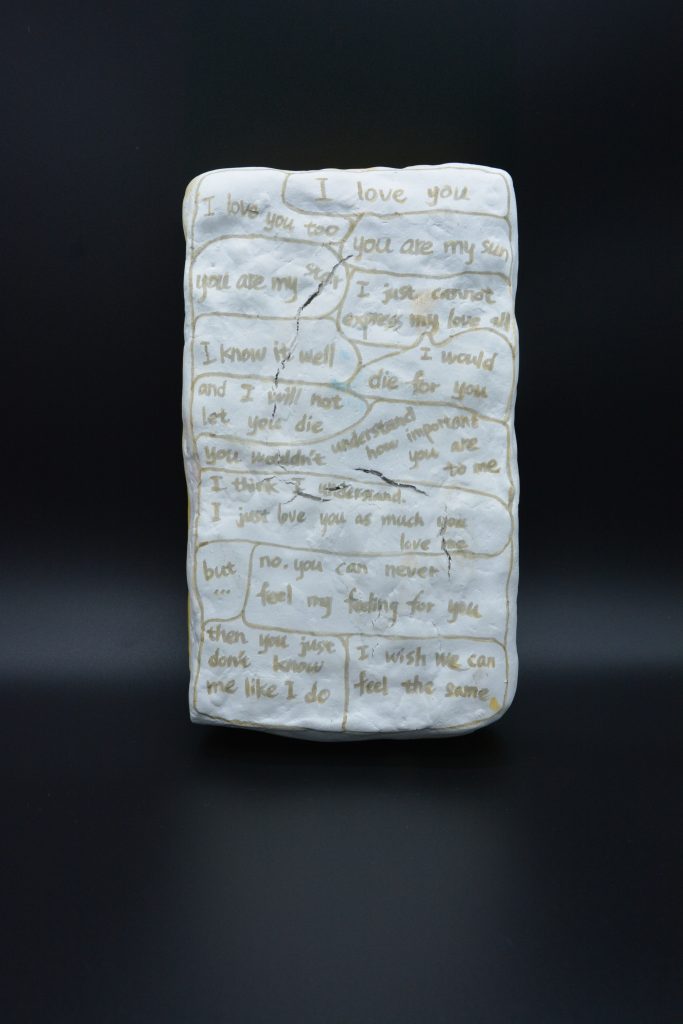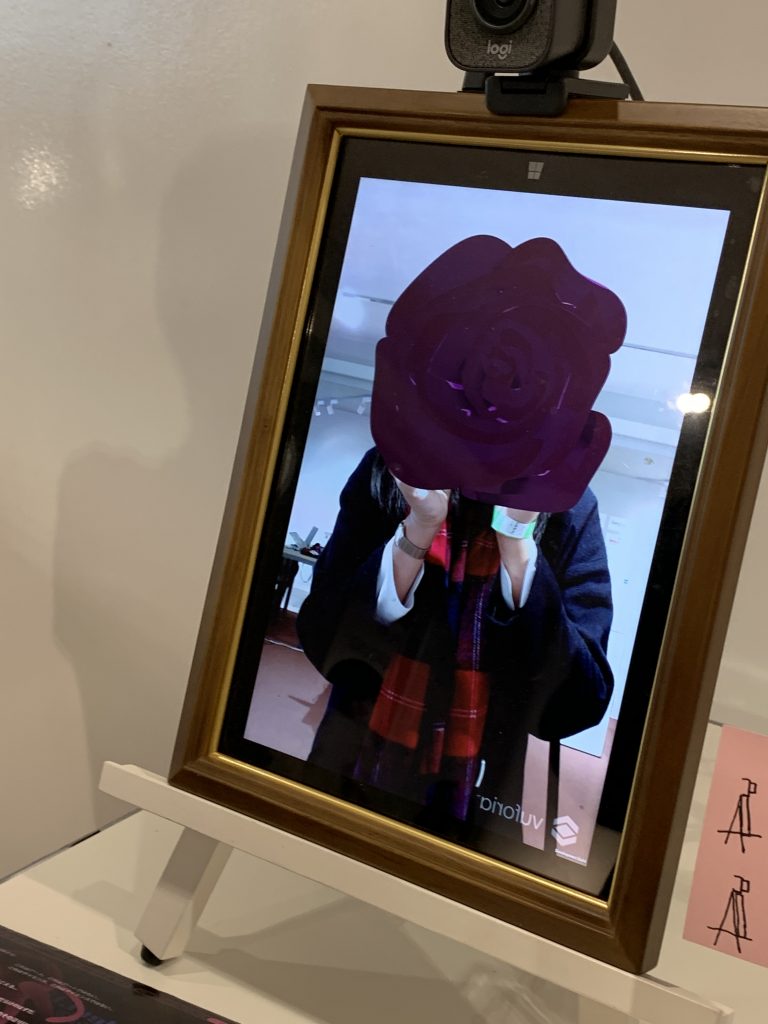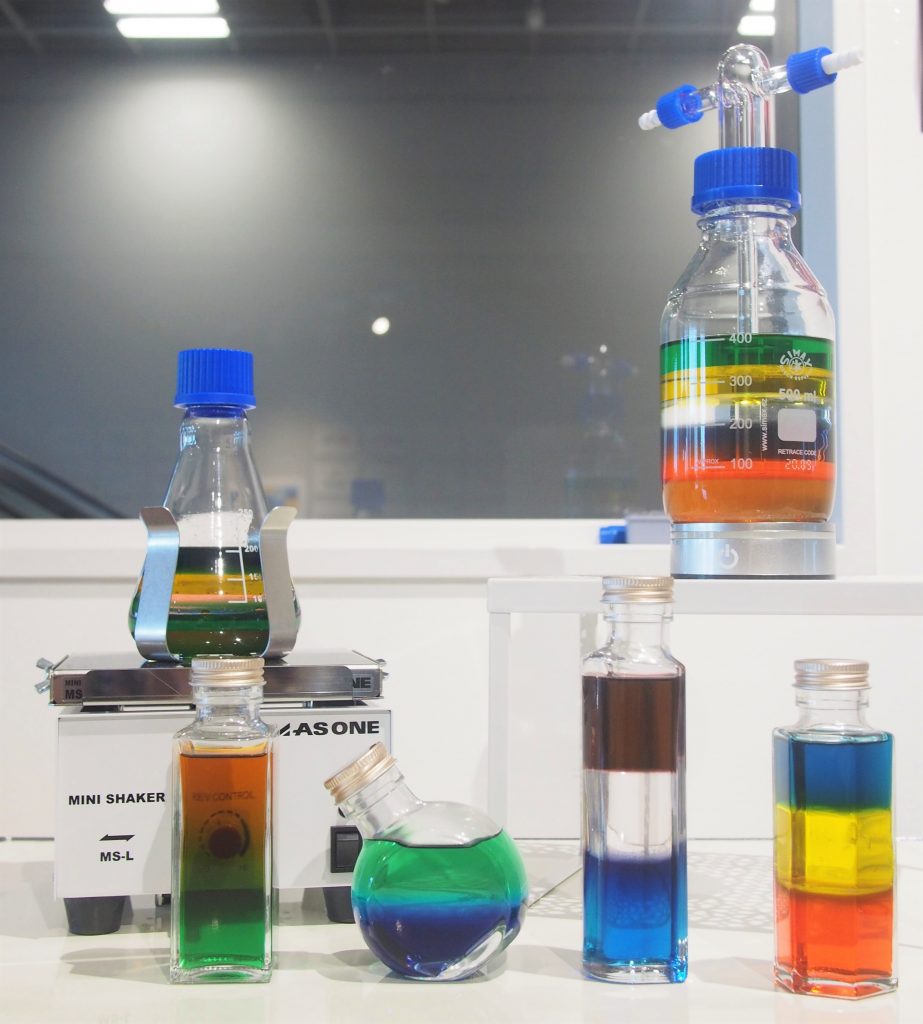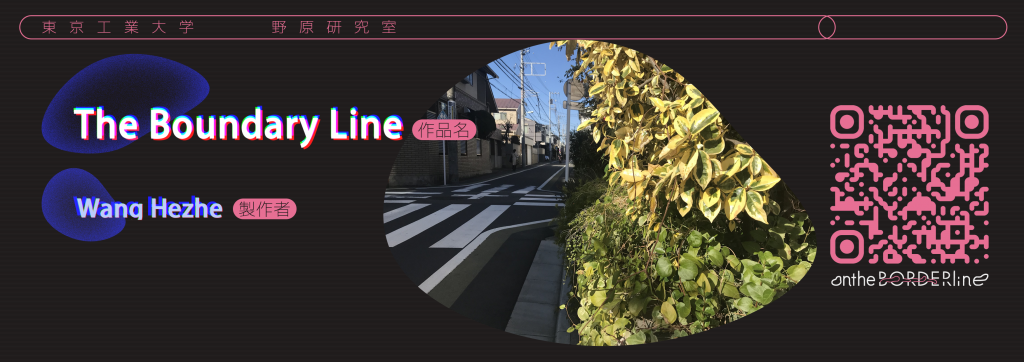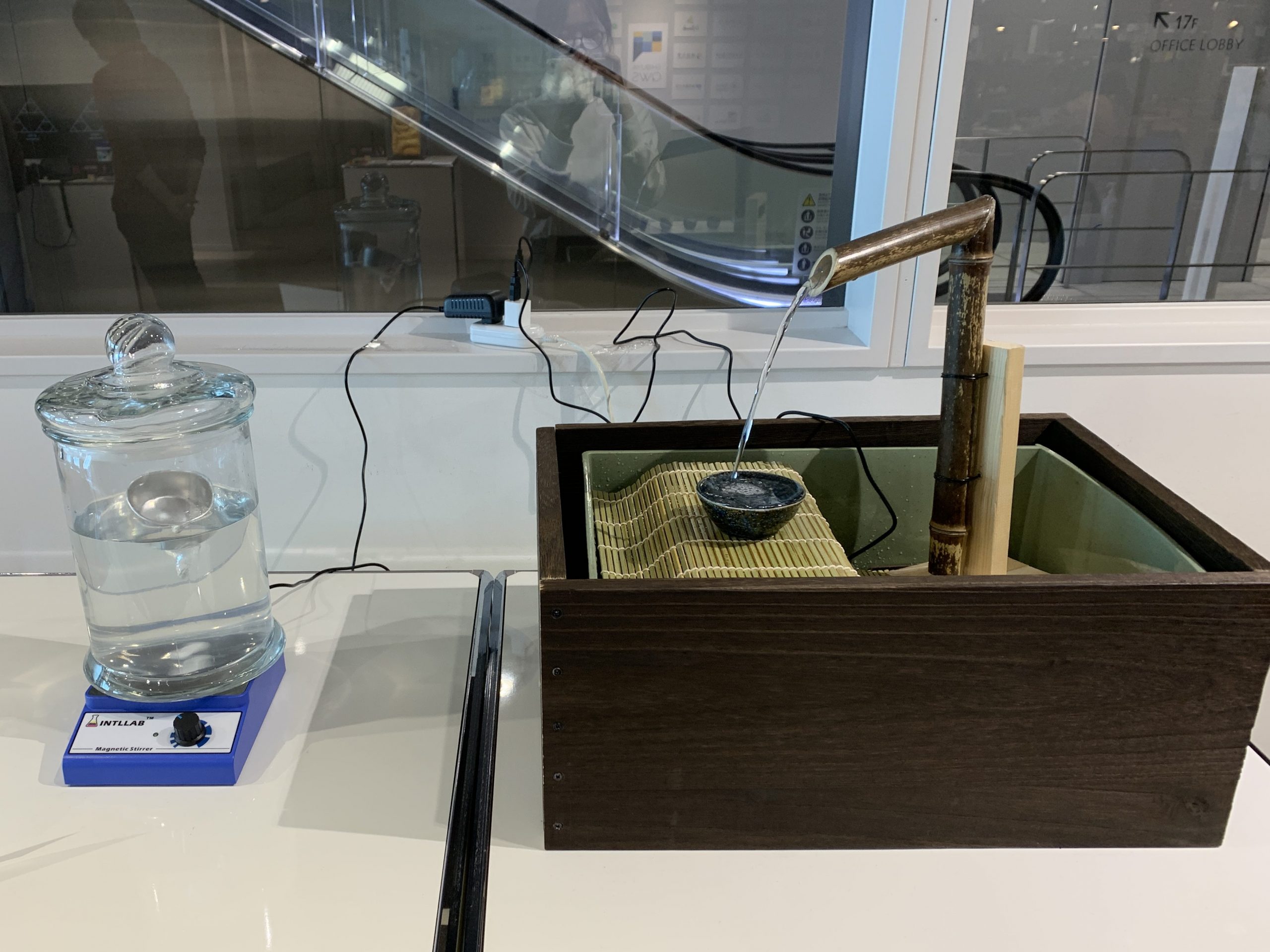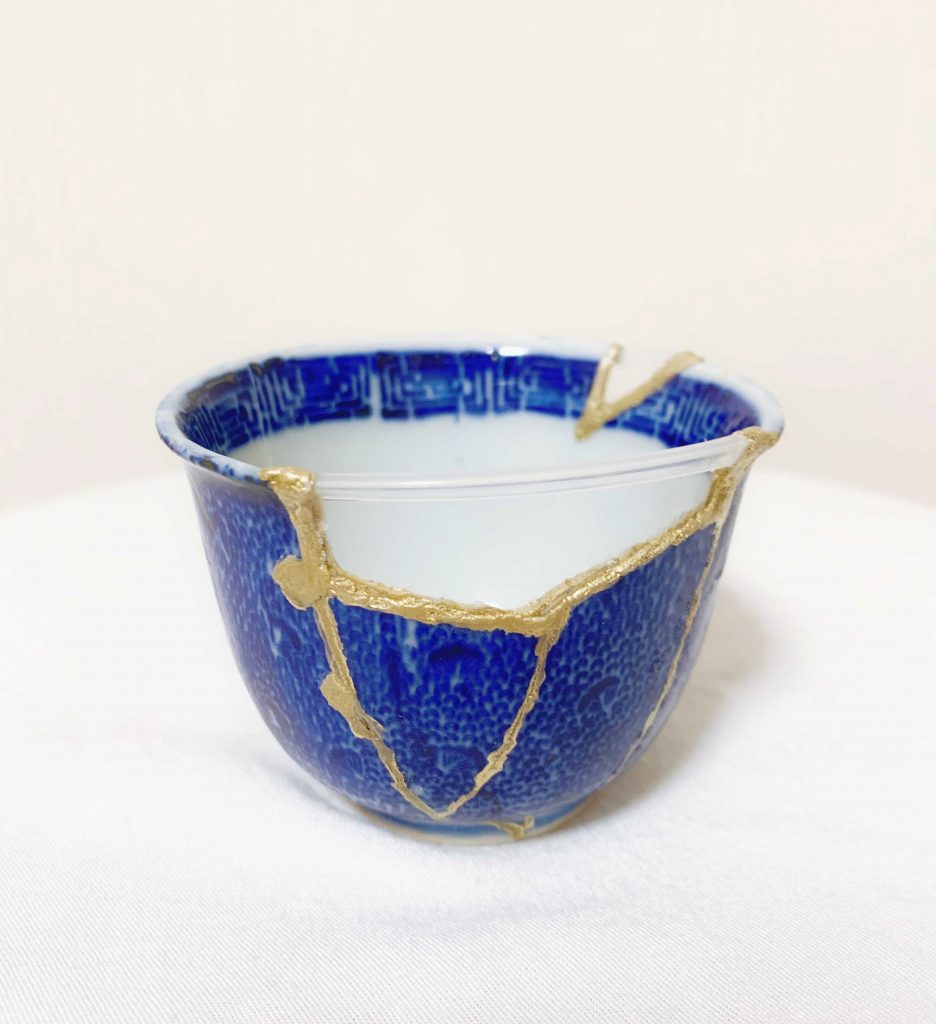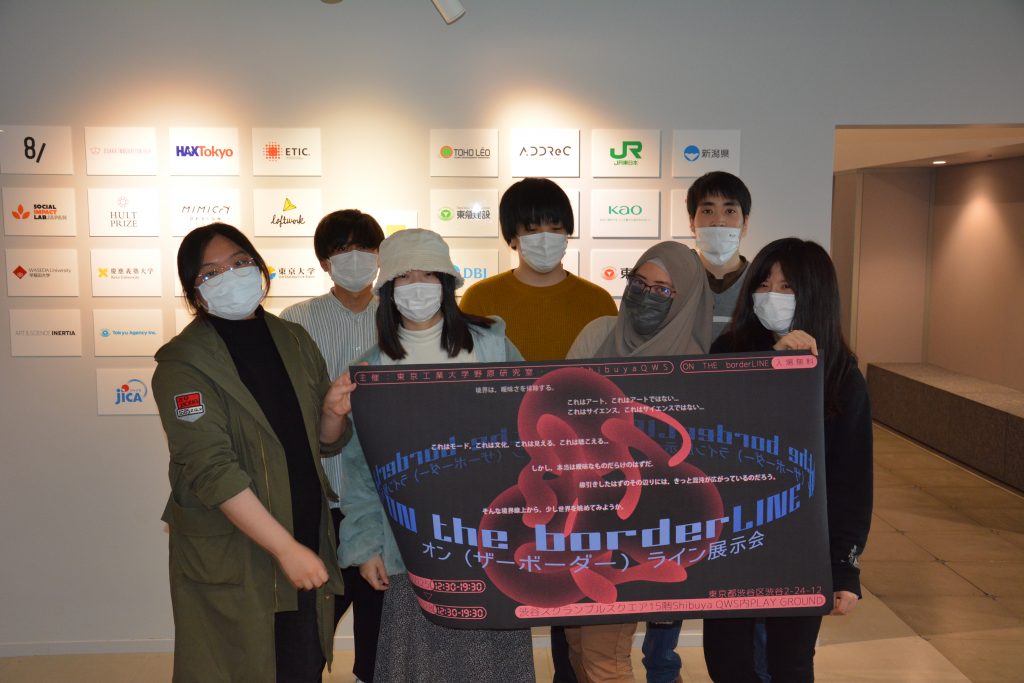【下記の日本語訳をご参照ください】
The ON The BorderLINE exhibition was held at Shibuya QWS, Tokyo, on 25-28 February 2021. In this post, the participants of this first student-led project of the STADHI Satellite Lab at Tokyo Tech reflect on the experience of creating artworks and share lessons learned from the event.
“I chose this lab because it was called Science & Art Lab,” Masamune Kawasaki, the 2nd year master’s student of the Engineering Sciences and Design course who directed the event, talked about his motivation in organizing the exhibition. After gaining experience in creating artworks and managing exhibitions outside the university in the previous year, he led the team of students from Nohara laboratory of the Transdisciplinary Science and Engineering Department at Tokyo Tech. “[…] I thought we could do it, so I suggested holding it at Tokyo Tech.”
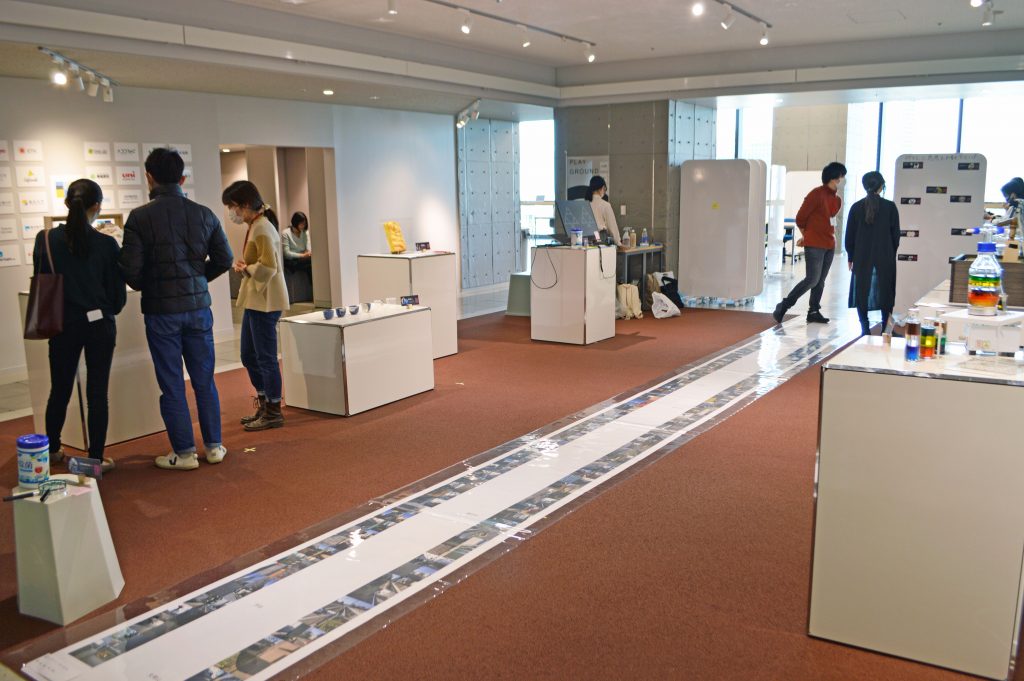
The student-centered event was partly supported by the Tokyo Tech World Research Hub Initiative (WRHI) through a programme that aims to integrate science/technology with art/design. Visitors were invited to experience the feeling of standing on various overlooked borderlines by engaging with a total of nine works purposefully made by nine students. Acting as both artists and management staff, the students carried out the project mostly online. The exhibition itself was held face-to-face in February 2021 under strict preventive measures put in place against COVID-19 infection in Tokyo. Despite the situation, more than 160 people visited the space and many expressed a great interest. Reflecting on the event here, some students share their honest views on the experience of holding the exhibition.
CONCEPT TRANSLATION
“Although before creating I thought it seemed too difficult, it was not difficult to create when I started.”
ON The BorderLINE was born from the urge to re-examine various ‘borders’ in the current uncertain and chaotic modern times. Trying to capture their own unique ‘borderline’ perspective, each artist translated it into exhibits. Utilizing their knowledge and field of expertise from studying at Tokyo Tech, each also aimed to achieve certain individual aspirations.
“I was trying to capture my feelings towards science and technology,” said Chihiro Wada about her work entitled 8.6.8.15. Her artwork stemmed from her research at Tokyo Tech as a 2nd year Doctoral student with a specialization in gender studies. Her knowledge of cultural signs and text helped in the creation of the artwork: “I tried to evoke a culturally general mental reaction towards the work while at the same time trying to create a confusing effect to stimulate people’s interpretation.” Her final piece resembled mushroom clouds in black and white, which was intended to create an ambiguous, unstable and indescribable psychological landscape. While the making process was relatively simple, she felt that deciding on the final design of the work was a major challenge.
Some visitors shared their impressions of the artworks on a board purposefully prepared for the occasion. Their comments reflect thoughts born after interacting with the students during the exhibition. “I realized that the ‘white feelings’ are not always ‘pure white’ […],” was mentioned after understanding the detail behind color used in the 8.6.8.15. Chihiro Wada was filled with awe by new and interesting interpretations of her work. “Through hearing their comments, I also re-interpreted my artwork,” she stated.

Rei Sato, a 2nd year Master student of the Global Engineering for Development, Environment, and Society (GEDES) course, was inspired by a London-based quantum music project for his 複雑系の音色/Complex Network Tones. “I tried to create state-of-the-art artworks based on science (physics research) and art (music), which is a completely new concept all over the world.” Based on previous studies, he tried to implement the algorithm from scratch and developed the programming by himself to create an original music piece. A visitor asked, paraphrasing the artist: “So this is the sound of this (natural) world?”. Sato reflected on his participation in the show, “Although before creating, I thought it seemed too difficult, it was not difficult to create when I started”. One of the challenges that required much effort was to visually present his non-tangible work through a digital visualization of the music.

In her Your Touch Makes Me Fragrant, Yuke Wang, 2nd year Master’s student of the Engineering Sciences and Design course, applied her theoretical olfactory research to interaction design. “I want to let people think about the relationship between humans and man-made things,” she said. Her interactive installation gave out an aroma when touched. She described the aroma as a metaphor for emotion and attachment. “Attachment makes artificial things emotional and special.” On a practical level, she especially pointed out how her technical background helped her in solving the problems she met in the making process.
The students spent months ‘translating’ their concepts into artworks, by sharing and discussing among each other while at the same time progressing with the overall event plan. Several WRHI members served as advisors, including Heather Barnett from Central Saint Martins, University of the Arts London, and Prof. Masahiko Hara and Dr. Giorgio Salani from Tokyo Tech. From them, the students received valuable feedback, technical hints to solve any bottlenecks, and overall guidance in materializing their ideas.
COMMUNICATING THOUGHT
“Through hearing their comments, I also re-interpreted my artwork.”
During the event, visitors could enjoy the exhibits while interacting with the students at the space. Serving as hall staff, the students were ready to explain each artwork to the visitors. Sometimes the talks went beyond simple explanations of individual works and reached a re-questioning of various underlying concepts and thoughts.
“Although I think my idea was easy to understand, there were still many in the audience who did not understand the concept until I explained it to them,” said Yamei, who was in her 2nd year of the Engineering Sciences and Design master course. Her piece, 私たちの間/ Border Between Us, was a clay sculpture based on the concept of the ever-present border of communication. While she was comfortable to be totally free in expressing herself, she felt insecure at the same time. Without a proper background in art, she wondered how far she managed to successfully convey her message. However, comments from visitors helped her become more confident. “Oh, although it sounds sad that we cannot truly understand each other, the relationship between us is still warm just like your work shows,” was one of the meaningful responses she received from visitors. “I suppose that most of them (visitors) did feel it (the message).”
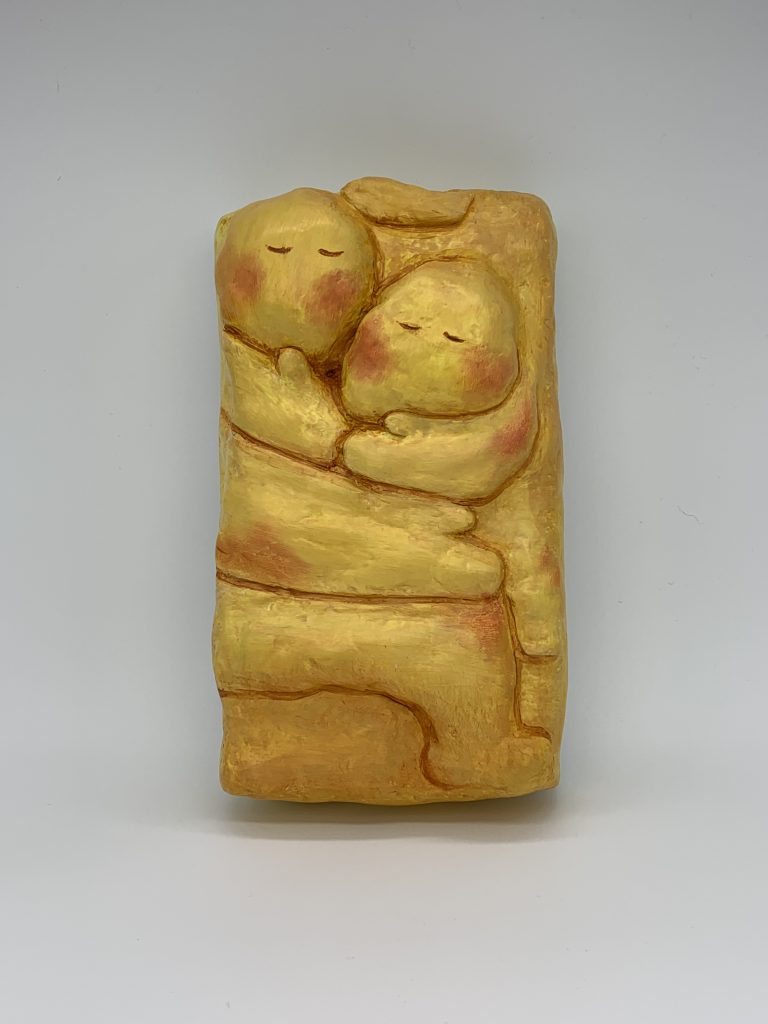
“[…] I am very glad I could have chance to apply the science communication theory I learned at Nohara laboratory,” Farah Fauzia, a 1st year Master student of GEDES course commented. Her work 社会apparatus/Society Apparatus was meant to convey the message that ‘it is fine to preserve our own color’ through unmixed colorful liquids inside laboratory vessels. Originally graduated from Chemical Engineering major before coming to Tokyo Tech, she tried to give a simple explanation of the scientific reason why the liquids could not get mixed to the visitors. “[I] wondered if there is also something in society that plays the role of surfactants,” one of the visitors commented on the work by using the technical term mentioned by the artists during the explanation. “I learned how to interact with visitors, especially using simple language […],” Fauzia reflected. Another memorable comment from some foreign-national visitors was: “They said they can relate to the concept. It (this artwork) was rather a ‘brave’ message to the Japanese society that was possible probably because of our diverse background.”
The numerous visitors to the exhibition included students, researchers, designers, creators, journalists, and business people. Some were foreign nationals, who enjoyed talking with students using a language other than Japanese. “I thought I had to prepare my business card and portfolio…” one of the students admitted when asked what they would do differently next time.

LESSON LEARNED
“I learned that we had to pass lots of processes to exhibit artworks.”
“Attending the exhibition is not only about creating a fine work,” Rei Sato reflected. “[…] I think most of us did not consider them at all at first.” Most members of the 9-strong team acted as both artists and management staff for this exhibition and struggled to find a balance between working on personal pieces and planning the event. “I learned that we had to pass lots of processes to exhibit artworks,” one stated. Most students identified time management as the most challenging aspect of the whole experience. “It was truly hard work,” Masamune Kawasaki – who led the team – admitted during the final evaluation meeting.

Under the COVID-19 infection risk, they needed to figure out how to smoothly carry out most of the production work online. For example, the team relied on the virtual layout of Shibuya QWS Playground to design the exhibition floor—since only limited people could visit the place during the preparation phase, and some trouble arose on the spot. “[…] You should leave enough time to test and adjust it in the exhibition space,” Yuke Wang reflected on her experience of taking long a time to find and fix a problem with her interactive installation that did not work well after its installation. “[…] Anything could happen during the exhibition time,” Farah Fauzia added, “It was very important to stay aware of overall exhibition space so we could respond swiftly.”
Another voiced a different opinion, “I think the most difficult part is generating good ideas”. The students spent months shaping their concepts into exhibits and went through a process of problem finding and solving in expressing their ideas. Chihiro Wada explored different ideas before finally settling on her [8.6.8.15] work. “I just kept thinking and thinking through creating my piece. It was a lot of work, but I believed it was necessary to the current me,” she explained.
When asked whether making the artwork helped them become a better researcher, some students were unconvinced. “I am not sure that they are related but […] I think it makes me better person,” Yamei expressed. Yuke Wang, who produced two pieces for the exhibition, pointed out the difference between the two activities: “Doing research is trying to figure out “why” and trying to express clearly to let other people understand. No ambiguity. But making artwork is more about expressing yourself. And different people can have different understanding of your artwork. There can be ambiguity.” However, most of them also agree that there are similarities between artwork production and research activities. “I think the process of finding a question and solving it is similar,” Wang said. “It was practically a trial and error, or experiments,” another added. “By not giving up and facing the challenge, we will equip ourselves with the necessary skills to become a good researcher,” Fauzia argued.
“I just kept thinking and thinking through creating my piece. It was a lot of work, but I believed it was necessary to the current me.”
FINAL REFLECTION, FUTURE THOUGHT
The students also shared personal impressions on their own pieces. “I like the texture and delicacy of my piece,” one of them honestly said. While others also stated they like their own pieces in terms of idea and quality, some felt not quite satisfied, “if I have more time, I can make them better.” Another student also added, “Next time, I would like […] to enhance the impact and message of the artwork.”
Some enjoyed receiving feedback and wanted to enable more interaction with the audience. “This experience is priceless,” one of the students summarized. For another student, through talking with various people with various background, one can also sell his/her own name. “This experience gives us a wide view not only of our artwork but also trigger future plans,” Rei Sato stated.

If there were opportunities in the future, all the students involved in the show agreed they would love to make artwork again. “Of course. I always have [a] strong desire of creating something,” Yamei eagerly stated. “I feel I need to express my thoughts not only through academic articles but also through art,” Chihiro Wada added. Another student also mentioned that this kind of experience is something that she probably could not easily come across in the future.
On the final evaluation meeting, event producer and director Masamune Kawasaki said he was glad this time there were some members who said they would want to experience the process again, “I think it was a good thing. We have experienced it once so we should be able to proceed more smoothly next time.” As all concerning issues (especially on the management side) were being evaluated, he hopes the event can be held annually. “We should collaborate with other universities,” one argued. During the event, some visitors from the architecture and literature department of another university came to talk about the overall exhibition with great interest. “It would be interesting to collaborate with them,” Kawasaki agreed.
He also pointed out his opinion that there might be something that can only be possible to be produced here in ScienceXArt Nohara Laboratory. “Unlike other laboratories, each individual has [a] different specialty, so the output will be different.” Different from art colleges who usually have a decided fixed output, university students (especially in non-art related majors) attempting to make artworks from original concepts may introduce interesting scientific innovations.
“This experience is priceless.”
Borrowing Prof. Kayoko Nohara’s words, through this exhibition, the Tokyo Tech students who specialize in science and technology have been trying to communicate with audience in a way that differ from your usual language. By integrating science/technology with art/design, they tried to explore media and tools that can capture the potential behind the organized chaos of the borderline. Reflecting on the experiences, they hoped the baton could be passed on to invite more audiences visiting whole new perspectives in future events.

Written by Farah Fauzia, based on an interview by Dr. Giorgio Salani. Edited by Giorgio Salani.
Contributor: Chihiro Wada, Yuke Wang, Rei Sato, Farah Fauzia, Yamei
2021年2月25〜28日にON The BorderLINE展示会(https://www.tse.ens.titech.ac.jp/~deepmode/csm/blog/25-28-february-2021-on-the-border-line-exhibition/)が東京の渋谷QWSで開催されました。この学生中心のイベントは、科学・技術とアート・デザインの融合を目的としたプログラムである東京工業大学WRHIによって部分的にサポートされました。観客には、9人の学生が制作した9作品に触れ、見落とされがちなさまざまな境界線に立つ感覚を体験してもらいました。
アーティストと管理スタッフの両方を務めた学生たちは、この東京工業大学STADHIサテライトラボ初の学生主導プロジェクトをほぼオンラインで実施しました。ここでは学生チームの一部のメンバーが、展示会の開催経験について率直な見解を共有しました。
コンセプトを翻訳し、作品を作成し、イベント全体を計画し、観客と交流するなど、学生たちは経験から学んだことを共有しました。最後的に、彼らはこの体験が大変貴重であることに気づき、機会があればまたこのプロセスを体験したいと話しました。
また、Science x Artラボである野原研究室でしか作れないものがあるかもしれないという観客からの反応もありました。このイベントでは、科学・技術を専門とする東工大生たちが、いつもの言葉ではない形で、コミュニケーションを図ろうとしています。科学・技術をアート・デザインと統合することにより、彼らは境界線の組織化された混沌の背後にある可能性を受けとめ発信できるメディアとツールを探求しようとしました。
ON the borderLINE のイベントについてはこちら(https://ontheborderline.myportfolio.com/about)。
